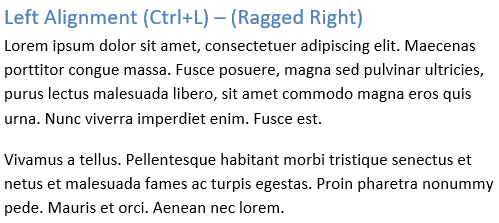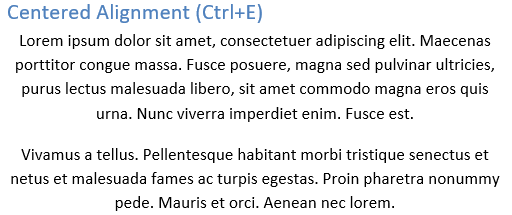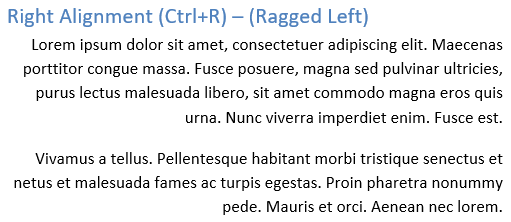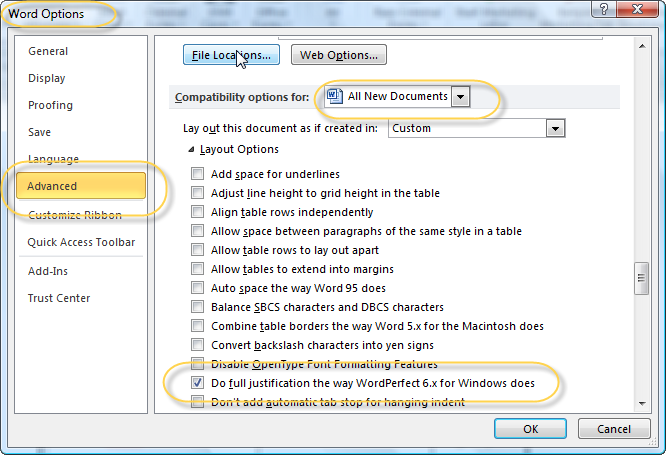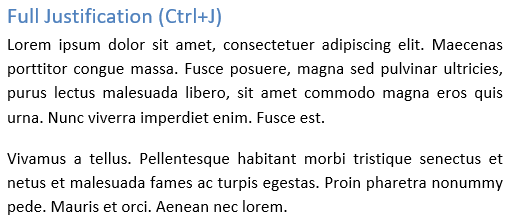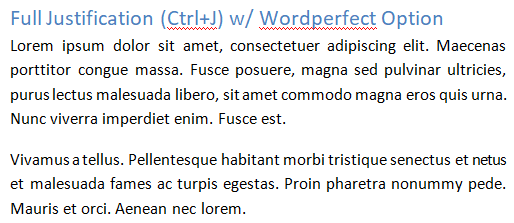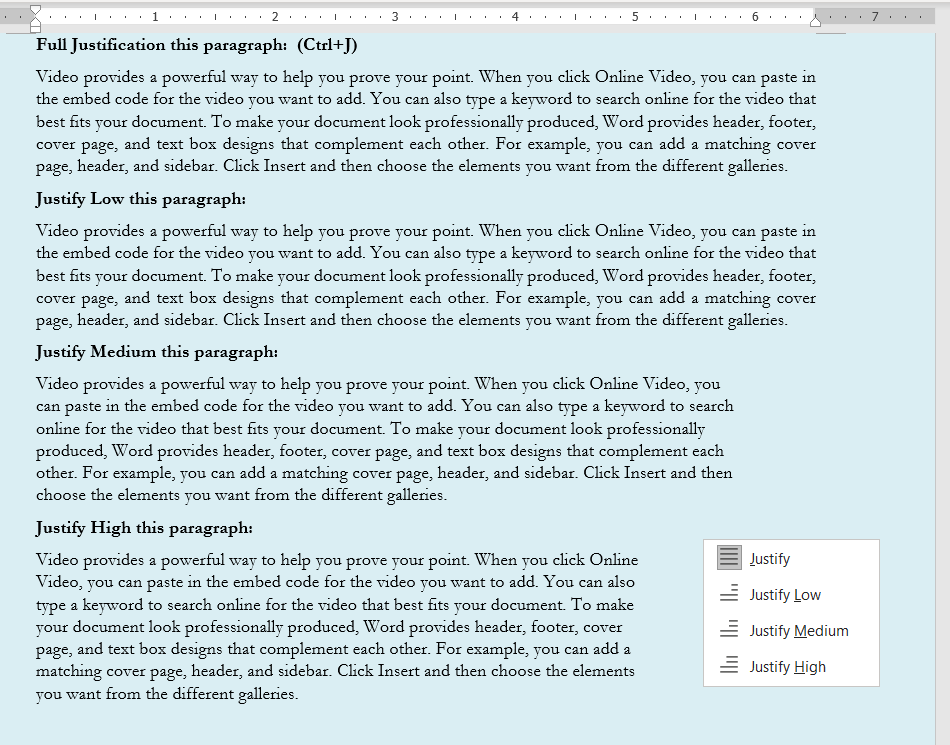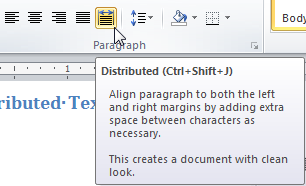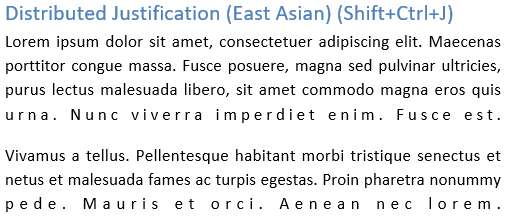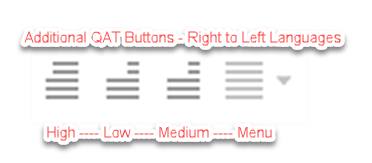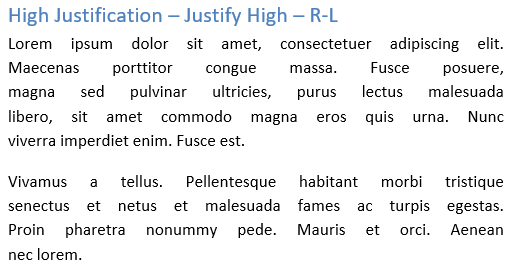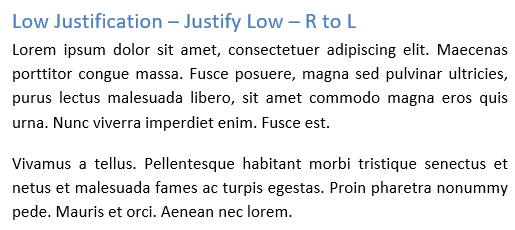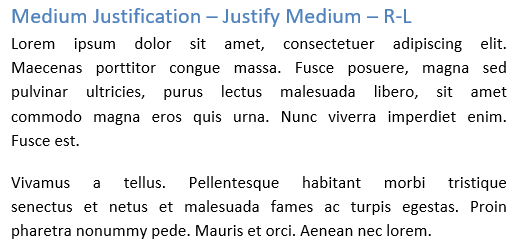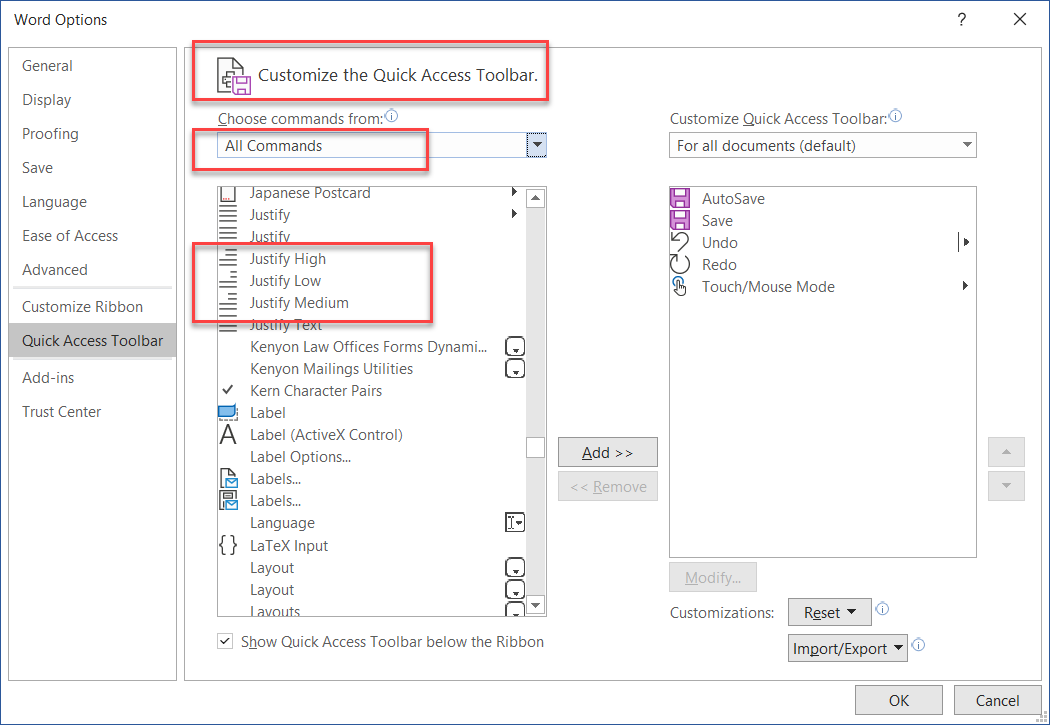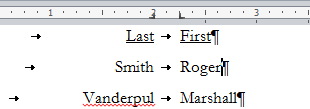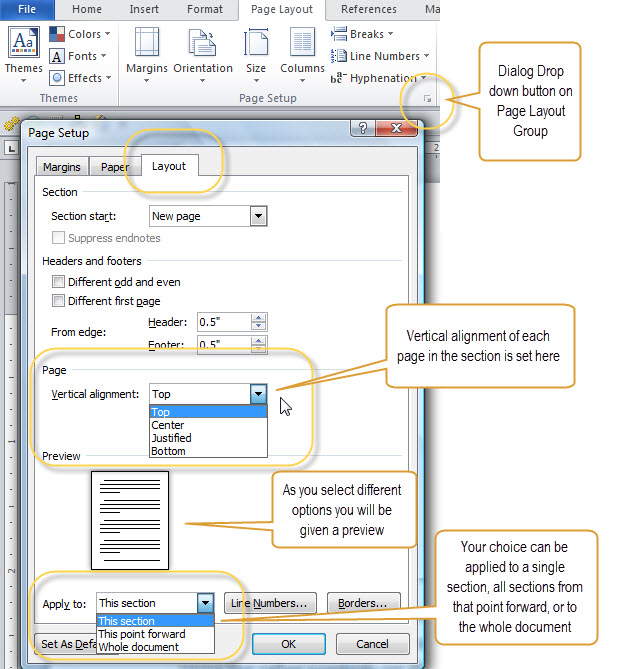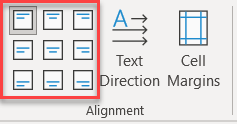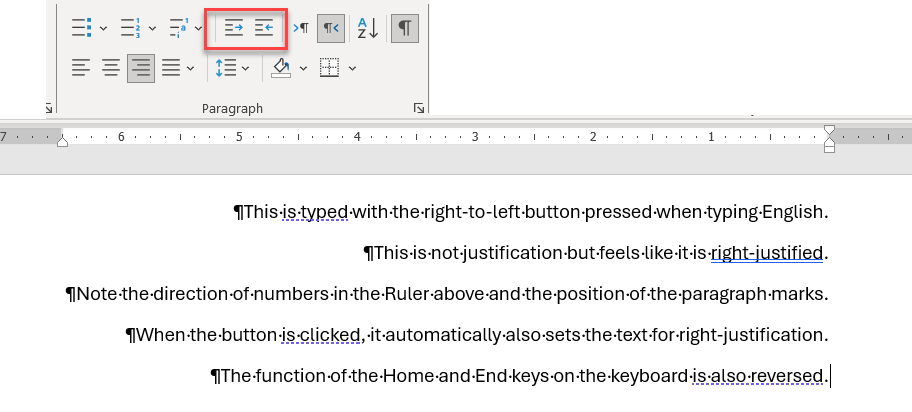Alignment/Justification of Text in Microsoft Word
by Charles Kyle Kenyon, Esq.
There are no promises that this chapter is of the same quality or depth as the other chapters of this guide. That is because it was written by a single author not working with Microsoft and not subject to peer review. You will not find this chapter on the Microsoft site.
This chapter has a companion Word document that was used for the screen shots. See also this wiki: Justification in Word
Last updated Sunday 16 November 2025.
Comments are welcome.
What You Will Learn
After completing this lesson, you will be able to:
| Understand and set text justification for Word | |||||||||||||||
Horizontally Align or Justify Text
| |||||||||||||||
Vertically Align or Justify Text
| |||||||||||||||
| Align or Justify Text in Tables | |||||||||||||||
| Align text to margins rather than indents or tabs | |||||||||||||||
| Align text in tables - can be controlled by different controls | |||||||||||||||
| Right-to-left text is a different concept with additional controls on the Home tab |
Other Chapters Related to Topics Covered in this Lesson
| Basic Formatting Techniques | |
| Understanding Styles | |
| Automatic Numbering | |
| Template Basics in Microsoft Word | |
| Tables |
Additional Written (or Web) Resources
Word for Law Firms and Lawyers
|
Introductory Comment:
I'm not sure this topic justifies a separate chapter in the User's Guide but the alternative was to really bloat the basic formatting chapter with information most people don't want or need.
Virtually all horizontal justification in Word is done with respect tab settings or to the left or right indent (not margins). Tab settings and indents are paragraph level formatting best set in Styles.
The screenshots here are from Word 2010, but the icons and keyboard shortcuts shown are identical in versions from Word 97-2013. Note that the screenshots of text include the Ruler to emphasize that the alignment is between paragraph Indents and not page Margins. The margins are shown by the text boundaries and on the Ruler. The Indents are not quite the same distance from the Margins. This is to show that the centering is done to the Indents as well.
The screenshots also have display of non-printing characters turned on. The ones visible are the paragraph marks and the dots for blank spaces.
Horizontal Alignment of Text in Microsoft Word
Unless support for some East-Asian language is installed, you will see four icons for paragraph alignment in Word.
![]()
The screen shots below all include a fifth icon for Distributed Text which will show up if you have East-Asian language support installed. The command is available even if the language support is not installed, though.
Left-Alignment (Ragged-Right)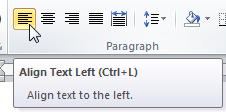 (Ctr+L)
(Ctr+L)
This is the default.
Because of the text used above, it looks like fully-justified text, but it is not. The text is not stretched to go all the way to the right Indent.
Center-Alignment (Centered)
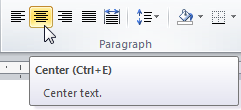 (Ctr+E)
(Ctr+E)
Right-Alignment (Ragged-Left)
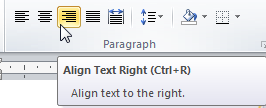 (Ctr+R)
(Ctr+R)
Full Justification / Alignment
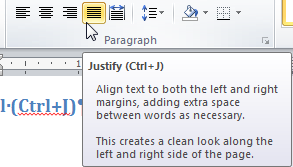 (Ctr+J)
(Ctr+J)
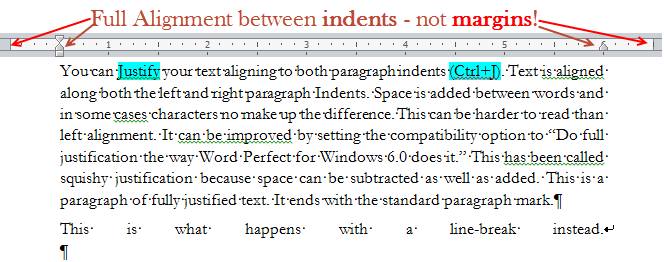
The demonstration screen shot above shows full alignment with both a paragraph mark at the end of a short line and a line break at the end of a short line.
First, permit me a slight rant. Don't use full justification! It makes your text look nice but it is harder to read! Also don't use hyphenation -- for the same reason. Reading is not done letter-by-letter. The brain uses the shape of the word to determine a meaning, and even the shape of a sentence. Both full justification and hyphenation mess with those shapes. (Done with rant; thank you for your tolerance.)
Fully justified text in newspapers and magazines is far more highly massaged than Word will do. This is through the use of kerning and ligatures.
Full justification can be enhanced in Word 2010 and earlier by using a Word Perfect compatibility option -- the only WP-compatibility option that I know of that is of any use.
Tools => Options => Compatibility (tab)
Check the box for "Do full justification like Word Perfect 6.x for Windows." This varies the space between words to a much finer degree than is the default for Word. Thanks to Woody's Office Watch for this tip. It still doesn't make the text as easy to read as left-justification. This option is not available for documents set up for Word 2013 or later.
If you do decide to use full alignment, just be aware that Word is a flawed tool to produce this kind of text.
Note that the WordPerfect option shifts text from line to line. This option is not available after Word 2010 except when in compatibility mode. The full justification was improved with Word 2013 but is still not as good as it is in Word 2010 with that WordPerfect adjustment.
Your Full Justification button may not show that it is in use because it has a dropdown for multiple kinds of full justification.
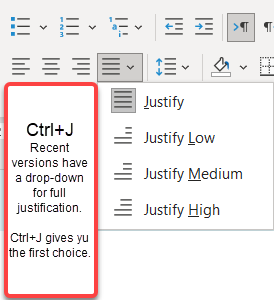
If it does have the dropdown, likely that is because you have some Middle Eastern language enabled like Arabic or Hebrew.
The screenshot below shows how these look with English-Language text. It may look better with Arabic or Hebrew text. I do not know.
I do not pretend to know the rationale for Justify Medium and Justify High. Neither seems to be truly justified but give something closer to justification with a ragged right edge. Here is the same text Left justified:
Distributed Paragraph Alignment (Ctrl+Shift+J) -
a relatively undocumented option

Unless you have support for some East-Asian Language installed, you will only see the four icons above with none showing as active. If you do have that language support turned on, you will see five icons in the paragraph alignment area with the fifth one being for Distributed.
This was built into Word as a part of East Asian Language Support and is in all versions of Word since at least Word 2003. Distributed should never be used in English for regular text. Note above that in the last line the parantheses and period are counted as characters and space is used to stretch them as well.
If you have language support turned on for any East Asian Language, the icon will be with your other paragraph formatting alignment options as shown. Otherwise, you can add the command for Distributed Paragraph text to the Quick Action Toolbar or a Ribbon in Word 2007 and later. It is under All Commands as "Distributed." When added to a the QAT or Ribbon, it gives the icon although not with the other icons. In Word 2003 you cannot display the icon (AFAIK) without installing support for an East-Asian language. The shortcut Ctrl+Shift+J, though, is available.
If you display the icon, it comes with the "tooltip" when you hover over it.
Again, I would never use Distributed for anything other than a single line of text for a special purpose. It does not, contrary to the tooltip shown, give a document a clean look!
My thank to Rohn and Stefan Blom for the information about the Distributed option. The keyboard shortcut does show up for the command Distribute Para in printed lists of commands or of keyboard shortcuts generated by Word using the ListCommands command. I call this an undocumented option becausethe Ctrl+Shift+J Shortcut does not show up in the lists of Keyboard Shortcuts on the Microsoft site that I've found. As far as I know, its use is not documented by Microsoft's site, at least not in English.
All of the methods shown so far keep the same text on each line, they simply move the text to different positions on a line. That is not the case with the justification methods for Right-to-Left languages. They can move words from line to line.
Justification - Right-to-Left Language buttons available on QAT
The above buttons give additional options, even if you are not using a Right-to-Left language. They give three additional degrees of justification.
Justify - High
Justify - Low
As far as I can tell, the Justify-Low setting is the same as the Full Justification setting.
Justify - Medium
Notice that the High and Medium settings move words from line to line. The menu button that gives a drop-down with all of these is only active if you have a Right-to-Left language enabled in you version of Word.
To put these on your QAT:
Modifying the Quick Access Toolbar (QAT) in Microsoft Word
When you have enabled an East-Asian Language, you will also have text-direction buttons on your Home Tab. See more below.
Justification - Left and Right - Flush Right
There are times when you want one column of text aligned to the left, and a second to the right. (In Word Perfect, this is called Flush-Right.) In Word, this is done by use of Tab settings or Alignment Tabs that ignore those settings.
A common example of this kind of formatting is a Table of Contents. Word will automatically define a Table of Contents in just this way. Here are examples of text with the Ruler, with the non-printing tab characters displayed.
Note that the tabs could be set at the paragraph indents; here they are not to make what is happening clearer. If they were set at the indents, the tab for the left-most text would not be used, simply the indent. Note also that a right tab could be set outside the right paragraph indent and/or the right page margin.
The second is Flush Right with an additional Center tab.
The third example uses a Right tab to align text on the left with an even right margin and that on the right with an even left margin. Still with a Center tab.
The fourth example shows use to line up columns to meet in the middle using tab settings.
Other times you will want one column aligned to the left margin, a second column centered and a third column right-aligned with the right margin. In Word Perfect this is done in a left-justified paragraph by typing the text on the left, pressing the Center key, typing the centered text, and then pressing Right-Justify and typing the text for the right margin. A typical place for doing this is in the headers and footers of a page. Both the header and the footer Styles are set up with a center-tab and a right-tab. If you are in either of these places, simply type your left text, press the tab key, type your centered text, press the tab key again, and type your right-aligned text. This is shown in the examples above.
If you need wrapping for these columns of text, whether in the body of your document or in a header or footer, you could use a Table in Word. Remember that each cell in a table can be aligned independently and that you can turn off the borders for the table so that it will not print lines between or around cells.
Otherwise you could set the Right Tab outside of the right Indent or even the Right Margin. The screenshots below show text where this has been done. They have the same margin settings but different indent and tab settings. Both use dot leaders for the Right Tab. Display of non-printing formatting characters is turned on. The first method shown below (tab set outside right indent) works in Word 2013 and later as well as earlier versions. The second method (tab set outside right margin) only works in Word versions 2010 and earlier.
See also Working with Tabs.
Vertical Justification / Alignment of Text in Microsoft Word
Just as text can be aligned to either the left or right indent (not margin) or centered horizontally with Word, it can be aligned to the top or bottom margins of the page or centered on the page using vertical alignment. In Word 97-2003, this is done using the Page Setup dialog found under the File menu. In Ribbon versions of Word it is done using the same dialog launched using the dialog launcher button on the Page Layout Group of the Page Layout tab. These and the dialog are shown below.
The dialog box is virtually identical from Word 97-Word 2019. The controls for vertical alignment are on the Layout tab of the dialog box in the middle. A preview will be displayed as you pick different options. Before you click on OK make sure your change will apply to the part of your document you want.
This setting somehow gets triggered every once in a while by mistake. It may be a rogue mouse click, a bad macro, or an upset employee. At the bottom right is a button that would apply the choice as a default. If that happens it saves the change in the normal template (normal.dot or normal.dotm) and will apply to all new documents! If this has happened, open your normal template and reset the vertical alignment the way you want most documents to be set up. Then save and exit the template.
Again, vertical alignment on the page is a Section formatting property, not a paragraph formatting property like horizontal alignment.
Alignment to Page Margins or Left and Right Indents Rather Than Tab Settings Using Alignment Tabs
Virtually all horizontal alignment in Word is done either in relationship to paragraph Indents or using Tabs - both set as a part of the paragraph formatting and often done in a Style. There are times when you want to align according to the left and right margins or corresponding indents and ignore tab settings. This can be done in a limited fashion (Left, Center, and Right) using Alignment Tabs introduced in Word 2007.
Justification of Text in Tables in Microsoft Word
See Using Tables for Organizing and Formatting in Microsoft Word
Alignment Within Tables is Handled by Additional Controls
To be worked on. See Cell Properties in the meantime.
In the Ribbon Versions of Word, when you are in a Table, two additional contextual tabs appear. Table Design and Layout (usually at the far right end of the Ribbon). The [Table] Layout Tab has additional alignment controls for individual cells.
These buttons are pretty much self-explanatory. Again, this tab and these controls are only available when you are in a table.
See this thread for where we are going with this.
East-Asian Languages give access to more text direction controls
This is not about justification, although enabling East-Asian Languages gives additional justification buttons as discussed above.
When you have any East-Asian language enabled, two additional buttons are added to the Paragraph Group on the Home tab.
These two buttons allow you to change the direction in which text is typed. Clicking on the Right-to-Left button will automatically change the justification setting to Right-justified as well but the user can choose to type with left, full, or distributed justification as well.
As noted in the screenshot, the position of paragraph marks moves to the left end when these are displayed. The direction of the numbers in the Ruler switches and the Home and End keys reverse direction for the line. Note that the language is not actually typed right-to-left.

